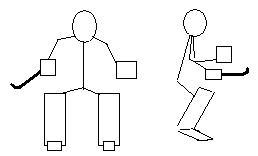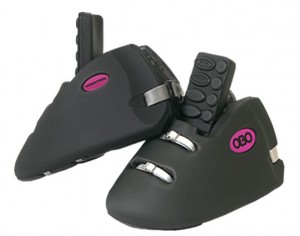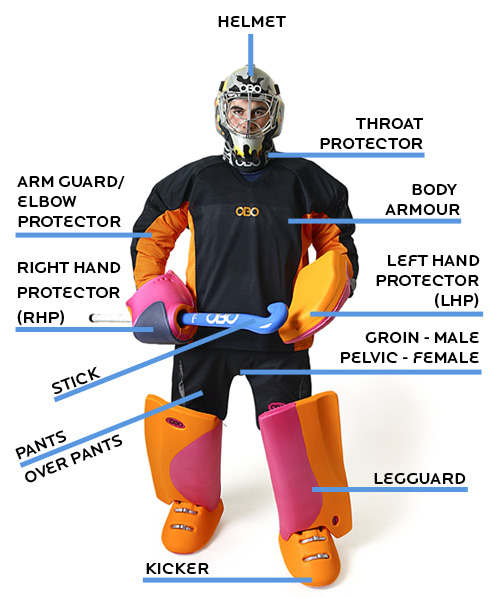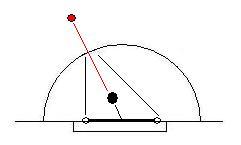The ready stance is your basic form of positioning – readying for the shot, and possible action. In essence, you should be in your ready stance whenever the game is in your end; you should be prepared for anything, as anything could happen. I personally change up and adapt my stance to suit different game situations, but when developing your style it is a good idea to test out the capabilities of your core ready stance, giving you optimum movement and glove usage.
Your ready stance should be suited to you: no-one else can make up your mind for you, or play for you, so working out what works for you will help your play in the long run. If it’s not broken, then don’t fix it, but if you find your stance affecting movement or making higher saves, you may want to change it.
The ‘ready’ stance
Your ready stance is what you go into before facing a shot; making sure you are all ready and raring to go, able to make the most out of your equipment to make the save – gloves out and legs prepared for the shot. As the player comes in, move into your ready stance, making sure you are ready to stop the incoming shot; setting up before means you are better off in your chance of making the save, not having to react immediately once the shot is taken.
Commonly theorised stance
The common theory for a ready stance is based on an open body shape, allowing you optimal movement and flexibility for save making. In the general stance, the gloves are held at mid-height, above the pads and below the shoulders (when raising your arms, your gloves will go above the hips, around chest/stomach height, or higher, depending on what the goalkeeper is comfortable with). The feet are placed shoulder width apart, so that the pads are open, allowing you to cover more space. Positioning of the hands and stick can vary to personal preferences. In readiness for a shot, the goalkeeper should be alert, but relaxed to make the save.

You stand on your balls of your feet rather than the tips, giving you greater balance in responding to the next shot, as discussed in the next section. The integral chin-above-knees-above-toes position has the knees bent and the back crouched with the head forward, with the chin above the knees and the knees above the toes; moving into a save allows you to control the ‘backlash’; not falling over as you over balance.
Getting set for the shot
Keep in mind the level of competition you’re facing, as these are common factors in deciding your optimal stance; if you are shorter you’ll want a taller stance, so you can stop the higher shots more easily, whereas if you’re taller person you’ll want a wider, lower stance as you already cover that space, and have trouble moving because of your size.
If you use a smalleer, closer together stance, it will take you longer to move around the circle, whereas a wider stance will make it easier for you to cover larger distances in smaller steps, but will leave the gap between your pads more vulnerable to a shot there.
Body Posture
How you position your body in relation to the chances of making the save is all important in your preparation for the shot. A fully prepared and set ready stance is central to the ability to make a successful save.
Balance is integral to movement and any save; if you topple back, you lose balance and could fall (putting you out of action for a second save, as you end up lying on the floor), whilst if you balance too far forward, you can end up similarly imbalanced; launching forward and toppling over. Balancing the motion of a save allows you control the shot and rebound better, which is needed for a successful and well executed save-clear; gaining greater control and power over the clearance of the shot during the redirect.
To learn about the different modern styles of the ready stance, follow this link: http://blog.obo.co.nz/2009/05/25/understanding-the-stances/








